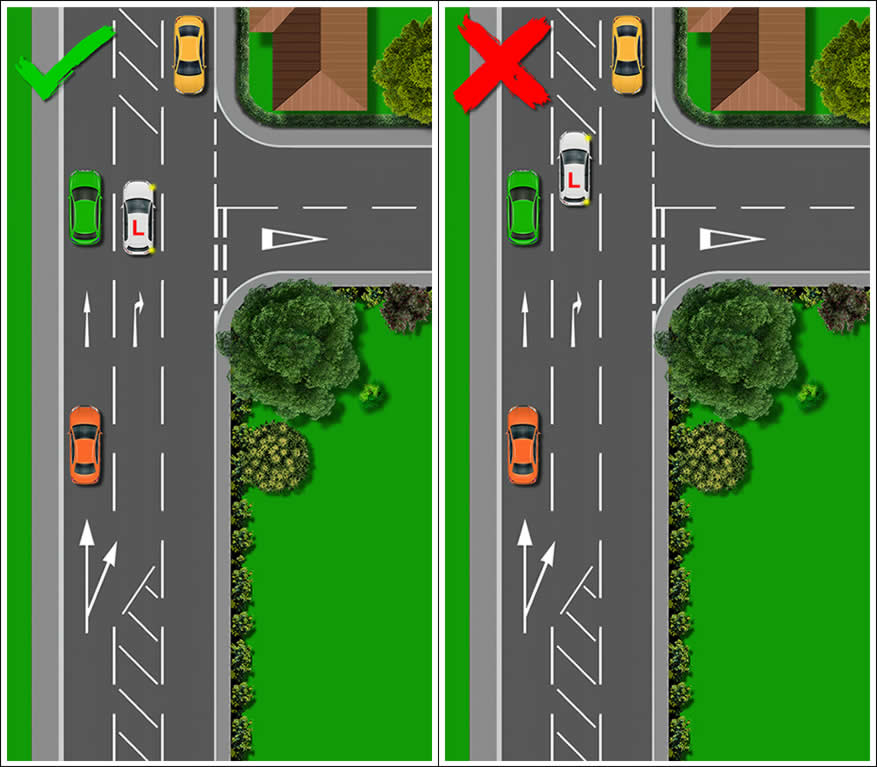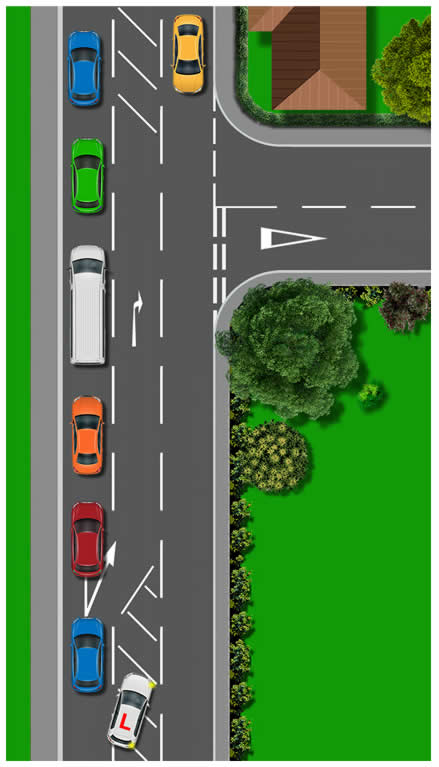Certain busy, more hazardous junctions will have a dedicated lane, or waiting area for making a right turn. A dedicated lane and waiting area for drivers turning right is often beneficial and safer for the following reasons:
- Traffic can continue ahead and does not need to stop behind the vehicle waiting to turn right
- On high speed roads, the right turning vehicle is separated from fast moving traffic, reducing the risk of rear-end collisions
- A dedicated right turn lane is safer as it involves a controlled two-stage process;
- The driver enters the lane and stops to give way
- The driver waits for a safe gap in the traffic, then proceeds ahead

Prior to entering a dedicated right-turn waiting area, carry out the MSPSL routine. These dedicated right-turn lanes have hatched areas at both ends. The hatched areas are so separate traffic lanes, essentially making it safer for road users.
A common mistake that many learner drivers make is when driving in the right lane, they go all the way to the end and stop at the hatched markings. If you do this, you’ll miss your point of turn (for information on the point of turn, see correct road position for making a right turn).
Many dedicated right-turn lanes are like this and it means if you go too far and miss your point of turn, you’re going to struggle to make the turn. You may end up hitting the kerb, or even mounting the pavement, which will result in a test failure. If you need help in establish where the point of turn is, see reference points for turning right into a side road.
Driving in the Hatched Areas
Most dedicated right-turn lanes have hatched areas that are surrounded by broken lines. If the lines are solid, it means that you must not drive in them, except in an emergency.
If the hatched areas are surrounded by a broken line, it means that you should avoid driving into the hatched area, but you can legally do so. An example of when you might want to consider driving into the hatched area surrounded by broken lines is during heavy traffic congestion.

In the diagram, the road ahead is blocked due to traffic congestion. In this situation, it would be acceptable for a driver to enter the hatched area to progress into the dedicated right-turn lane. However, you should only do this if you have sufficient observation and can establish that it’s safe to do so. If in any doubt, do not enter the hatched area.